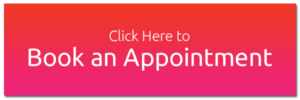Thumb tendonitis is a condition called de Quervain’s tenosynovitis that causes pain on the inside of the wrist and forearm just above the thumb. It is a common problem affecting the wrist and is usually easy to diagnose.
Anatomy of Thumb tendonitis
What part of my thumb and wrist is causing problems?
De Quervain’s tenosynovitis affects two thumb tendons. These tendons are called the abductor pollicis longus (APL) and the extensor pollicis brevis (EPB).
Tendons connect muscle to bone. Muscles pull on tendons for movement.
Causes of Thumb tendonitis
How did this condition develop?
Repeatedly performing hand and thumb motions such as grasping, pinching, squeezing, or wringing may lead to the inflammation of tenosynovitis. This inflammation can lead to swelling, which hampers the smooth gliding action of the tendons within the tunnel. Arthritic diseases that affect the whole body, such as rheumatoid arthritis, can also cause tenosynovitis in the thumb. In other cases, scar tissue from an injury can make it difficult for the tendons to slide easily through the tunnel.
Symptoms
What problems does this condition cause?
- At first, the only sign of trouble may be soreness on the thumb side of the forearm, near the wrist. If the problem isn’t treated, pain may spread up the forearm or further down into the wrist and thumb.
- As the friction increases, the two tendons may actually begin to squeak as they move through the constricted tunnel. This noise is called crepitus. If the condition is especially bad, there may be swelling along the tunnel near the edge of the wrist. Grasping objects with the thumb and hand may become increasingly painful.
Diagnosis
What tests will my doctor want to do?
At the Centre, for Musculoskeletal Medicine we usually diagnose de Quervain’s tenosynovitis easily through a physical examination. Most of the time no special tests are required, however, the major problem can be distinguishing de Quervain’s tenosynovitis from intersection syndrome, which is a very similar condition. Careful attention must be paid to where the pain is located: over the de Quervain’s tunnel

near the end of the radius bone, or over the intersection point on the wrist. The intersection point is about three inches up the forearm. The Finklestein test is one of the best ways to make the diagnosis. You can do this test yourself. Bend your thumb into the palm and grasp the thumb with your fingers making a fist with the thumb inside. Now bend your wrist away from your thumb. If you feel pain over the tendons to the thumb, your problem may be de Quervain’s tenosynovitis.
Treatment
How can I make the pain go away?
- If at all possible, you must change or stop all activities that cause your symptoms. Take frequent breaks when doing repeated hand and thumb actions. Avoid repetitive hand motions such as heavy grasping, wringing, or turning and twisting movements of the wrist. Keep the wrist in a neutral alignment. In other words, keep it in a straight line with your arm, without bending it forward or backward.
- Ultrasound, soft tissue and stretches to help control the swelling of the tenosynovium and ease symptoms.
- Iontophoresis uses a mild electrical current to push anti-inflammatory medicine to the sore area.
- Dry needling encourages healing.
- Special exercises are used to encourage normal gliding of the tendon.
- Wear a special forearm and thumb splint called a thumb- spica splint. This splint keeps the wrist and lower joints of the thumb from moving. The splint allows the APL and EPB tendons to rest, giving them a chance to begin to heal.
- Anti-inflammatory medications may also help control the swelling of the tenosynovium and ease symptoms.
- A Cortisone injection into the irritated tunnel. Cortisone reduces the swelling of the tenosynovium and may temporarily relieve your symptoms. Cortisone injections will usually control the inflammation in the early stages of the problem.

